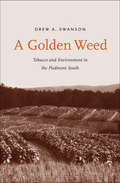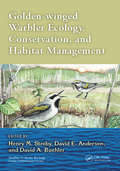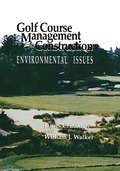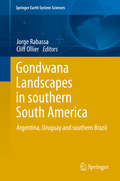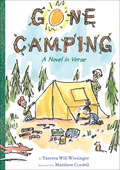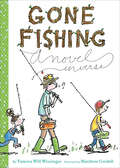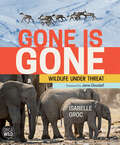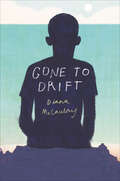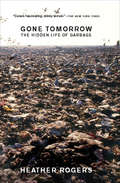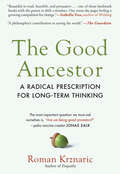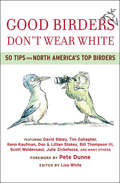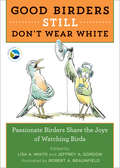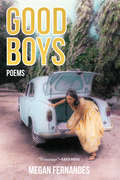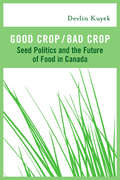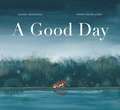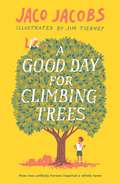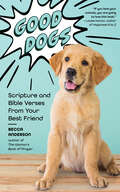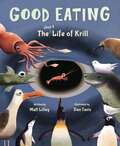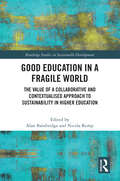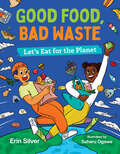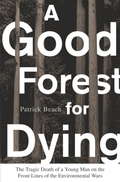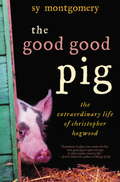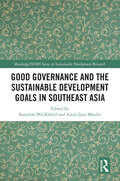- Table View
- List View
A Golden Weed
by Dr Drew A. SwansonDrew A. Swanson has written an "environmental" history about a crop of great historical and economic significance: American tobacco. A preferred agricultural product for much of the South, the tobacco plant would ultimately degrade the land that nurtured it, but as the author provocatively argues, the choice of crop initially made perfect agrarian as well as financial sense for southern planters. Swanson, who brings to his narrative the experience of having grown up on a working Virginia tobacco farm, explores how one attempt at agricultural permanence went seriously awry. He weaves together social, agricultural, and cultural history of the Piedmont region and illustrates how ideas about race and landscape management became entangled under slavery and afterward. Challenging long-held perceptions, this innovative study examines not only the material relationships that connected crop, land, and people but also the justifications that encouraged tobacco farming in the region.
Golden-winged Warbler Ecology, Conservation, and Habitat Management (Studies in Avian Biology)
by Henry M. Streby, David E. Andersen and David A. BuehlerGolden-winged Warblers (Vermivora chrysoptera) are migratory songbirds that breed in temperate North America, primarily in the Great Lakes region with remnant populations throughout the Appalachian Mountains, and winter in Central and northern South America. Their breeding range has contracted dramatically in the Appalachian Mountains and many populations have dramatically declined, likely due to habitat loss, competition and interbreeding with Blue-winged Warblers (Vermivora pinus), andglobal climate change.. As a result of population declines in much of the eastern portion of their breeding range, Golden-winged Warblers are listed as endangered or threatened in 10 U.S. states and in Canada and have been petitioned for protection under the U.S. Endangered Species Act. Published in collaboration with and on behalf of The American Ornithological Society, this volume in the highly-regarded Studies in Avian Biology series compiles extensive, current research on Golden-winged Warblers and summarizes what is known and identifies many remaining unknowns, providing a wealth of peer-reviewed science on which future research and listing decisions can be based.
Golf Course Management & Construction: Environmental Issues
by James C. Balogh William J. WalkerGolf Course Management & Construction presents a comprehensive summary and assessment of technical and scientific research on the environmental effects of turfgrass system construction and maintenance. Although the book focuses on golf courses, it also discusses turfgrass systems for residential and commercial lawns, parks, and greenways. The book is an excellent introduction to the concepts of nonpoint source environmental impacts of turfgrass management for turfgrass scientists and specialists, landscape and golf course architects, turfgrass system and golf course developers, golf course superintendents, environmental scientists, and land-use regulators.
Gondwana Landscapes in southern South America
by Jorge Rabassa Cliff OllierThis book presents extensive and new information on the geomorphology of cratonic areas of southern South America. It includes valuable data relating to recurrent controversies in general geomorphology beyond the boundaries of South America and reveals the great need to integrate many different aspects of geomorphology in regional studies. With the focus on ancient landscapes and especially on planation surfaces it addresses the question of what processes could form such huge features, and how they can be preserved for so long. Many of the papers include maps of planation surfaces or other geomorphic units. The volume brings together an up-to-date, state-of-the-art collection of information on South American geomorphology, and shows beyond doubt that geomorphology is on the same time scale as global tectonics, biological evolution and major climate change. Some of the papers describe ancient geomorphological features of areas that have never been studied or published before, while others describe regions which are totally unknown to the public. The scope of the book extends from tropical latitudes north of the Tropic of Capricorn, south to freezing Patagonia in the "roaring fifties", more than 3,500 km from north to south. Including over one thousand citations from geological and geomorphological literature, this volume will serve as a starting point for a whole new phase of studies of the fascinating landscape history of southern South America.
Gone Camping: A Novel in Verse
by Matthew Cordell Tamera Will WissingerHiking in the great outdoors, catching fish, watching the stars come out at night—camping is fun. Until it’s time to sleep. Then, Lucy wonders, what kinds of creatures lurk in the dark? With only her brother and grandpa as tent-mates, will Lucy be able to face her camping fears? Filled with a variety of poetic forms—from aubade to haiku—as well as exuberant art and helpful writing tips about rhyme and rhythm, this entertaining companion to the award-winning Gone Fishing is packed with family humor and adventure. So grab a flashlight and get settled in to experience the joy of campfires, s’mores, and storytelling!
Gone Fishing
by Earlene R. LongA father and son go fishing with a big fishing rod for daddy and a little one for the child.
Gone Fishing: A Novel in Verse
by Tamera Will WissingerNine-year-old Sam loves fishing with his dad. So when his pesky little sister, Lucy, horns in on their fishing trip, he’s none too pleased: “Where’s my stringer? / Something’s wrong! / The princess doll does not belong!” All ends well in this winsome book of poems—each labeled with its proper poetic form, from quatrain to tercet. Together the poems build a dawn-to-dusk story of a father-son bond, of sibling harmony lost and found—and most of all, of delicious anticipation. Charming line drawings animate the poetry with humor and drama, and the extensive Poet’s Tackle Box at the end makes this the perfect primer to hook aspiring poets of all ages.
Gone Fishing: A Novel (Into Reading, Trade Book #9)
by Tamera Wissinger Tamera Wizssinger Matthew CordellNIMAC-sourced textbook. Nine-year-old Sam loves fishing with his dad. So when his pesky little sister, Lucy, horns in on their fishing trip, he’s none too pleased. All ends well in this winsome book of poems—each labeled with its proper poetic form. Together the poems build a dawn-to-dusk story of a father-son bond, of sibling harmony lost and found—and, most of all, of delicious anticipation. Charming line drawings animate the poetry with humor and drama, and the extensive Poet’s Tackle Box at the end makes this the perfect primer to hook aspiring poets of all ages.
Gone is Gone: Wildlife Under Threat (Orca Wild #2)
by Isabelle GrocGone Is Gone looks at why species become endangered, how scientists are learning about endangered wildlife, what people are doing to conserve species and ways young people can help. The book is richly illustrated with unique photos that the author has taken over many years of observing endangered species in the field alongside the people who work to conserve them. Throughout the book the author shares enchanting encounters and personal field stories: watching narwhals socialize in the Canadian Arctic, ,getting close to a Laysan albatross raising chicks in a remote Hawaiian island, spotting a rhinoceros on safari, and even swimming with giant tortoises in the Galapagos Islands. Gone Is Gone will inform, intrigue and inspire readers to take small steps toward big changes for endangered species around the world.
Gone to Drift
by Diana McCaulay“McCaulay’s prose is lyrical. A solemn adventure about resolve, loyalty, and family, that gives readers insight into life in a small fishing community and brings to light the dangers marine life face in the wild.” — School Library Journal“The relationships between boy and elder, man and sea, crime and poverty all lift McCaulay’s first children’s novel into a different league. Beautiful.” — Kirkus Reviews (starred review)“The heartbreaking realism of this story of innocence lost at sea truly sets this novel apart.” — Bulletin of the Center for Children’s Books“This makes a good choice for adventure fans, the eco-conscious, and those hoping to understand the economic hardships faced by those who make their living from the sea.” — Booklist“Gone to Drift is a compelling coming-of-age story with a strong sense of place and culture.” — Voice of Youth Advocates (VOYA)
Gone Tomorrow: The Hidden Life of Garbage
by Heather RogersEat a take-out meal, buy a pair of shoes, or read a newspaper, and you're soon faced with a bewildering amount of garbage. The United States is the planet's number-one producer of trash. Each American throws out 4.5 pounds daily. But garbage is also a global problem; the Pacific Ocean is today six times more abundant with plastic waste than zooplankton. How did we end up with this much rubbish, and where does it all go? Journalist and filmmaker Heather Rogers answers these questions by taking readers on a grisly, oddly fascinating tour through the underworld of garbage.Said to "read like a thriller" (Library Journal), Gone Tomorrow excavates the history of rubbish handling from the 1800s to the present, pinpointing the roots of today's waste-addicted society. With a "lively authorial voice" (New York Press), Rogers draws connections between modern industrial production, consumer culture, and our throwaway lifestyle. She also investigates controversial topics like the politics of recycling and the export of trash to poor countries, while offering a potent argument for change.
The Good Ancestor: A Radical Prescription For Long-term Thinking
by Roman KrznaricFrom leading philosopher Roman Krznaric, an urgent call to save ourselves and our planet by getting to the root of the current crisis—society’s extreme short-sightedness As heard on NPR’s TED Radio Hour When Jonas Salk developed the polio vaccine, he refused to patent it—forgoing profit so that more lives could be saved. His radical generosity to future generations should inspire us, but leading philosopher Roman Krznaric sees the opposite happening: Our short-term, exploitative mindsets have “colonized the future,” leaving an inexcusable chasm between the haves and have-nots—and mounting existential threats—that have brought our species to the precipice of disaster. Yet Krznaric sees reason to hope. The urgent struggle for intergenerational justice calls for hugely ambitious solutions, from rewiring our growth-at-all-costs economy to giving voters of future generations a voice in our democracies. But at the heart of all these changes is one we can enact within ourselves: We must trade shortsightedness for long-term thinking. In The Good Ancestor, Krznaric reveals six practical ways we can retrain our brains to think of the long view and to shift our allegiance from this generation to all humanity—to save our planet and our future.
Good Birders Don't Wear White: 50 Tips From North America's Top Birders
by Robert A. Braunfield Tim Gallagher Kenn Kaufman Don Stokes Lillian Stokes Bill Thompson III Scott Weidensaul Julie ZickefooseDavid Sibley, Don and Lillian Stokes, and many more share their inside tips—and witty observations—on the birding life. The biggest names in birding dispense advice to birders of every level—on topics ranging from feeding birds and cleaning binoculars to pishing and pelagic birding—in these lighthearted essays accompanied by illustrations. Whether satirizing bird snobs or relating the traditions and taboos of the birding culture, this collection of wisdom is as chock-full of helpful information as it is entertaining. &“The book is a delight to read and will generate new enthusiasm for the hobby. The 25 black-and-white line drawings are hilarious.&” —Booklist
Good Birders Still Don't Wear White: Passionate Birders Share the Joy of Watching Birds
by Robert A. Braunfield Richard Crossley Pete Dunne Kenn Kaufman Michael O'Brien Bill Thompson III Julie ZickefooseAvid North American birders share wit, wisdom, advice, and what fuels their passion for birds. Birding gets you outside, helps you de-stress, exercises your body and mind, puts your day-to-day problems in perspective, and can be lots of fun. Birders know this, and in this collection of thirty-seven brief essays, birders from diverse backgrounds share their sense of wonder, joy, and purpose about their passion (and sometimes obsession). From the Pacific Ocean to Central Park, from the rainforest in Panama to suburban backyards—no matter what their habitat, what good birders have in common is a curiosity about the natural world and a desire to share it with others. In these delightful essays, each accompanied by an endearing drawing, devoted birders reveal their passion to be fulfilling, joyful, exhilarating, and maybe even contagious. Contributors include many well-known birders, such as Richard Crossley, Pete Dunne, Kenn Kaufman, Michael O'Brien, Bill Thompson, and Julie Zickefoose—and a portion of the proceeds goes to the American Birding Association, North America's largest membership organization for active birders.
Good Boys: Poems
by Megan FernandesIn an era of rising nationalism and geopolitical instability, Megan Fernandes’s Good Boys offers a complex portrait of messy feminist rage, negotiations with race and travel, and existential dread in the Anthropocene. The collection follows a restless, nervy, cosmically abandoned speaker failing at the aspirational markers of adulthood as she flips from city to city, from enchantment to disgust, always reemerging—just barely—on the trains and bridges and bar stools of New York City. A child of the Indian ocean diaspora, Fernandes enacts the humor and devastation of what it means to exist as a body of contradictions. Her interpretations are muddied. Her feminism is accusatory, messy. Her homelands are theoretical and rootless. The poet converses with goats and throws a fit at a tarot reading; she loves the intimacy of strangers during turbulent plane rides and has dark fantasies about the “hydrogen fruit” of nuclear fallout. Ultimately, these poems possess an affection for the doomed: false beloveds, the hounded earth, civilizations intent on their own ruin. Fernandes skillfully interrogates where to put our fury and, more importantly, where to direct our mercy.
Good Crop / Bad Crop: Seed Politics and the Future of Food in Canada
by Devlin KuyekIN RECENT YEARS Canadians have become more and more concerned about the origins oftheir food and the environmental impacts of pesticides in agriculture. What is less well knownis that pesticide corporations such as Monsanto and Du Pont have bought their way into the seed industry and are taking control of what was once the exclusive domain of farmers.In Good Crop / Bad Crop, Devlin Kuyek deftly examines the economic and environmental background of the modern seed trade from a Canadian perspective. Historically seeds were viewed more as public goods than as commodities, and plant breeding objectives were widely shared by scientists, governments, and farmers. Now that approach is changing; seeds have become increasingly commodified, and plant breeding has become subject to corporate priorities. Farmers and citizens in Canada, Kuyek points out, need to heed the hard-won lessons from the developing world, where farmers greatly damaged by the much-heralded approaches of theGreen Revolution are now taking steps to reclaim control over seed supplies, food security, and their futures.
A Good Day
by Daniel NesquensThe cat and the tiger are best friends. Every day, the cat enters the zoo and visits the tiger&’s cage. They talk about everything, but when the cat confesses that he&’d like to be big and strong like the tiger, he&’s shocked to learn that the tiger envies him for being free to go wherever he wants. The tiger has a plan to escape from the zoo and find his real home—all he needs is some help from his best friend. Animal lovers of all ages will fall in love with this fanciful story about friendship and freedom.
A Good Day for Climbing Trees
by Jaco Jacobs*Nominated for the 2019 CILIP Carnegie Medal* How two unlikely heroes inspire a whole town by fighting to save a tree Sometimes, in the blink of an eye, you do something that changes your life forever. Like climbing a tree with a girl you don't know. Marnus is tired of feeling invisible, living in the shadow of his two brothers. His older brother is good at breaking swimming records and girls&’ hearts. His younger brother is already a crafty entrepreneur who has tricked him into doing the dishes all summer. But when a girl called Leila turns up on their doorstep one morning with a petition, it&’s the start of an unexpected adventure. And finally, Marnus gets the chance to be noticed...
Good Dogs: Scripture and Bible Verses from Your Best Friend
by Becca AndersonAdorable dog photos paired with iconic Bible verses to warm your heart and give you guidance in times of need. Verses for Daily Meditation. This selection of inspiring, holy words will help you gain a greater understanding on subjects like faith, love, strength, peace, and knowledge. Becca Anderson, author of The Women&’s Book of Prayer and Prayers for Hard Times, knows you&’ll find the truth and hope you need guided by the Lord?and everyone&’s best friend in this Christian dog book.Good Dogs is the perfect Christian inspirational gift. In this book, you&’ll find: Thought-provoking verses for encouragement and meditationClarifying explanations on every pageBeautiful, heartwarming images of all your favorite dog breedsPerfect for readers of What&’s True about You, Zen Dogs, Color the Words of Jesus, or The Psalms in ColorPraise for Good Dogs&“If you love your animals, you are going to love this book. It will remind you that the bond we share with our pets is an expression of divine love.&” —Louise Hamon, author of Happiness A to Z
Good Eating: The Short Life Of Krill
by Matt LilleyCalifornia Eureka Silver Honoree award 2022 "To my delight, your average krill is a far stranger story of metamorphosis than anything our butterflies can come up with." - Elizabeth Bird, A Fuse 8 Production A fun exploration of a tiny animal at the base of the ocean food chain Just 2 inches long full-grown, this little guy is the foundation of the Southern Ocean food chain... “Hi. What are you? You appear to be an egg. You are an egg sinking. For many days, you sink. You sink a mile down, and you keep sinking down… down… until…” The unidentified narrator follows one krill among billions as it pursues its brief existence, eating and eating while metamorphosing from one thing into another and trying to avoid being eaten. Questions and advice are hurled at the krill on every page, but the krill never responds—because, after all, krill can’t talk, and this is nonfiction. Krill are the largest animals able to catch and eat phytoplankton, and they in turn are eaten by the largest animals ever to live on earth—blue whales—as well as by seals, penguins, and a host of others. In other words, krill are really good at eating, and they make really good eating. And that makes them the most important animals in the high-latitude oceans. As in The Whale Fall Café, Dan Tavis’s illustrations combine scientific accuracy with Nemo liveliness and humor. Our star krill is so good at gobbling up phytoplankton that he turns green, so we can pick him out from the crowd racing to escape a penguin’s beak or a blue whale’s gaping maw. The book has been reviewed and endorsed by global krill expert Dr. Stephen Nichol, and the manuscript earned an honorable mention in Minnesota’s McKnight Artist Fellowships for Writers. Helpful backmatter is included. The Good Eating manuscript won an honorable mention in Minnesota’s McKnight Artist Fellowships for Writers. Technical review and endorsement from Dr. Stephen Nichol, adjunct professor at the University of Tasmania and author of The Curious Life of Krill.
Good Education in a Fragile World: The Value of a Collaborative and Contextualised Approach to Sustainability in Higher Education (Routledge Studies in Sustainable Development)
by Alan Bainbridge Nicola KempThis edited collection aims to provoke discussion around the most important question for contemporary higher education – what kind of education (in terms of purpose, pedagogy and policy) is needed to restore the health and wellbeing of the planet and ourselves now and for generations to come? The book contains contributions from colleagues at a single UK University, internationally recognised for its approach to sustainability education. Introducing a conceptual framework called the ‘Paradox Model’, the book explores the tensions that underpin the challenge of developing sustainability in higher education in the 21st century. It asks probing questions about the purpose of higher education in the 21st century given growing concerns in relation to planetary safety and justice and calls for a rethinking of educational purpose. It draws upon the theory and practice of education and explores how these can develop an understanding of sustainability pedagogies in practice. Finally, it delivers thought-provoking discussion on what constitutes a ‘good’ higher education that meets the needs of a world in crisis. Drawing on a planetary health lens, the book concludes with a ‘manifesto’ that brings together the key insights from the contributing authors. This will be an engaging volume for academics and educators from a wide range of disciplines in higher educational settings interested in translating sustainability theory into educational practice.
Good Food, Bad Waste: Let's Eat for the Planet (Orca Think #9)
by Erin SilverA deep dive into why humans waste so much food and the consequences for people and the planet Around the world, a billion tons of food gets thrown away every year, even when hundreds of millions of people suffer from hunger. A lot of what we don't eat ends up rotting in landfills which contributes to global warming. The good news is that many governments, communities and individuals are working hard to tackle this giant problem. You can be part of the solution, starting in your own home—and working together, we can decrease our overall waste and make sure all people have food security. Plus, by reducing food waste, we can also fight climate change! With inspiring profiles of food-waste activists and tasty tidbits on things like best-before dates, Good Food, Bad Waste offers much food for thought. The epub edition of this title is fully accessible.
A Good Forest for Dying: The Tragic Death of a Young Man on the Front Lines of the Environmental Wars
by Patrick BeachEarly on a September morning in 1998, David "Gypsy" Chain and eight fellow Earth First! activists went into the redwood forests of Scotia, California. Their loosely organized plan to protest the destruction caused by the logging industry almost immediately turned farcically tragic. A. E. Ammons, a logger for Pacific Lumber, confronted the group, threatening them in an obscenity-ridden diatribe: if they didn't leave "I'll make sure I got a tree comin' this way!" The group retreated, moving deeper into the wilderness. A short time later, just as they were attempting to confront the logger yet again, Gypsy was dead, crushed to death by a tree Ammons felled. A GOOD FOREST FOR DYING traces the long history of bitter clashes between environmental concerns and economic interests in the American West and shows why these tensions came to a head in northern California in the 1990s. It tells the story of how Pacific Lumber, once an environmentally friendly, family-owned business, became part of a conglomerate whose business practices made it a ripe target for environmental activists. But A GOOD FOREST FOR DYING is also the story of Gypsy Chain, a troubled young man raised in a loving family. A social misfit in his small Texas hometown, he died in a faraway forest before he had a chance to come to terms with himself and his family. His mother never lost faith in her sometimes wayward, idealistic son. After his death, and helped by a team of shrewd, leftist lawyers, she mounted a fight for justice in the name of her son and the cause of saving the redwoods. A balanced, highly readable examination of complex, emotionally charged issues, A GOOD FOREST FOR DYING will appeal to a wide audience. Its insights into the inner workings of the radical environmental movement and its dissection of corporate greed and misdeeds are reminiscent of such provocative exposés as A Civil Action and Erin Brockovich. The story of Gypsy's strange odyssey and the disturbing circumstances of his death-seen primarily through the eyes of his mother--is as powerful and as moving as Jon Krakauer's classic Into the Wild.
The Good Good Pig: The Extraordinary Life of Christopher Hogwood
by Sy Montgomery“Christopher Hogwood came home on my lap in a shoebox. He was a creature who would prove in many ways to be more human than I am.”–from The Good Good PigA naturalist who spent months at a time living on her own among wild creatures in remote jungles, Sy Montgomery had always felt more comfortable with animals than with people. So she gladly opened her heart to a sick piglet who had been crowded away from nourishing meals by his stronger siblings. Yet Sy had no inkling that this piglet, later named Christopher Hogwood, would not only survive but flourish–and she soon found herself engaged with her small-town community in ways she had never dreamed possible. Unexpectedly, Christopher provided this peripatetic traveler with something she had sought all her life: an anchor (eventually weighing 750 pounds) to family and home.The Good Good Pig celebrates Christopher Hogwood in all his glory, from his inauspicious infancy to hog heaven in rural New Hampshire, where his boundless zest for life and his large, loving heart made him absolute monarch over a (mostly) peaceable kingdom. At first, his domain included only Sy’s cosseted hens and her beautiful border collie, Tess. Then the neighbors began fetching Christopher home from his unauthorized jaunts, the little girls next door started giving him warm, soapy baths, and the villagers brought him delicious leftovers. His intelligence and fame increased along with his girth. He was featured in USA Today and on several National Public Radio environmental programs. On election day, some voters even wrote in Christopher’s name on their ballots.But as this enchanting book describes, Christopher Hogwood’s influence extended far beyond celebrity; for he was, as a friend said, a great big Buddha master. Sy reveals what she and others learned from this generous soul who just so happened to be a pig–lessons about self-acceptance, the meaning of family, the value of community, and the pleasures of the sweet green Earth. The Good Good Pig provides proof that with love, almost anything is possible.From the Hardcover edition.
Good Governance and the Sustainable Development Goals in Southeast Asia (Routledge/ISDRS Series in Sustainable Development Research)
by Rasyikah Md Khalid and Ainul Jaria MaidinThis book discusses management and governance initiatives undertaken by agencies and stakeholders towards achieving the Sustainable Development Goals (SDGS) in the Southeast Asian region, specifically Malaysia, Indonesia, Thailand and Singapore. It highlights the theories, methodologies and action plans involved in implementing the goals in these countries and the importance of developing a positive relationship between the public and government agencies. With contributors coming from a range of disciplines and backgrounds across the Association of Southeast Asian Nations (ASEAN) region, this edited collection provides a holistic quantitative and qualitative approach to achieving the SDGs. In order to realise these development objectives, it argues that a strong understanding of the basic principles of governance across all levels is required, supported by effective citizen participation and conflict resolution. It provides a detailed overview of the importance of governance at the country level, addressing the key elements of an integrated framework to support sustainable transitions. Regional case studies highlight processes and recommendations for improving governance and risk management and elevating citizen awareness and participation. Good Governance and the Sustainable Development Goals in Southeast Asia is a comprehensive and valuable companion for researchers, government agencies, and professionals with an interest in the SDGs in Southeast Asia and beyond.
